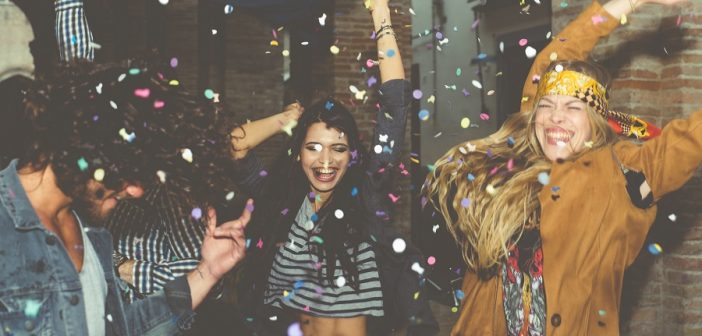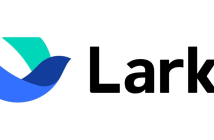You apparently cannot find or read about Easter in the Bible, but for decades there have been several cherished Easter traditions all over the world. The Easter bunny, the Christian holiday’s most notable secular symbol, was allegedly introduced to America by those German immigrants who told tales about an egg-laying hare. It is presumed that the decoration of eggs had been around since the 13th century, whereas the Easter Parade custom has ancient origins. Over the years, other Easter traditions were then continually being added among the celebration of this early spring holiday, including the consumption of Easter candy, wearing of a hare mask and egg hunting.
Easter Bunny Mascot or Wearing of a Hare Mask
You will not be able to find or read anywhere in the Bible about a creature who has long ears and a short tail who provides well-behaved children with colorfully decorated eggs during Easter Sunday; but somehow, the Easter bunny has still become a famous symbol of the one of the most significant holidays of Christians – the Easter. The specific history of such a mythical creature seems to be ambiguous, but hares are an ancient representation of fertility and new life because they are well-known to be productive procreators. According to certain sources, the Easter bunny first emerged in America in the 1700s. The German immigrants who were settling in Pennsylvania brought their tradition of an egg-laying hare which is called Osterhase or Oschter Haws. German kids created nests whereby the colored eggs of this mythical creature could be laid. Pretty quickly the custom swept throughout the U.S. and Easter morning deliveries of the mythical rabbit or hare expanded to also include chocolate and several other kinds of sweets and gifts, whilst also nests had also been substituted with decorated boxes. In addition, in case the rabbit will get hungry from all of his hopping, children often leave carrots for the bunny.
Furthermore, wearing of Easter bunny mascots is popular during this Christian holiday. However, if wearing a mascot would be too much for others, then they just usually opt to wear a hare mask. Below is a step by step guide on how to make a hare mask.
How to Make a Paper Hare Mask
Making your very own hare mask is fun and easy for adults and children alike. You can make use of inexpensive materials to make your hare mask for you to wear during Easter Sunday. You can choose on whether you would want the hare mask to cover your entire face of maybe opt to just cover your eyes. To make it wearable, you can attach a ribbon or a string. There are even ways to preserve your hare mask so that you can still use it on the next year’s Easter Sunday.
- Design Your Hare Mask
- The best material that you can use for your hare mask would be the cardstock, although you can also opt to use cardboard or a paper plate which is sturdy enough.
- Draw the shape of a hare (or you can also print out a picture of a hare) on the cardstock. You can choose whether to make a hare mask which would cover your whole face, half your face, or maybe just cover your eyes.
- Decorate Your Hare Mask
- When you are done tracing out or drawing the shape of your hare mask, you can then proceed in designing it. You can be as creative as you want to be in decorating it.
- You can use paint, crayons or markers instead of chalk and pastels since the latter can easily rub off and it might get into your eyes.
- Decide on whether you just want to have your hare mask in just one solid color or maybe design it with stripes or polka dots.
- You can also add glitters, fur and some jewels to your mask. Just make sure that you just put an ample amount of decorations – not too numerous and not too heavy ones because this will weigh down the paper hare mask.
- Set aside your hare mask and do not do anything with it unless it has completely dried out. It if it would be possible, you can leave the mask to dry out overnight. The mask would most likely be ruined if you wear it without completely drying it out.
- Make Your Hare Mask Wearable
- Use scissors, a razor blade or an X-Acto knife to cut out the shape of your hare mask. Make sure that you will not be cutting any of the additions that you have attached to the mask. You can bend the paper to make it easier for you when cutting it with scissors.
- After cutting it out, get a ribbon or a string to make a tie for you to wear your mask. Alternatively, it you are not fond of ribbons or strings, you can just attach a stick to make a handle.
- Preserve Your Hare Mask
- Keep your hare mask dry at all times. This is very important if you want your mask to be worn more than once. It will easily tear apart if it gets wet because it is just made of paper.
- You can store your hare mask in a container with a cover to protect it from dust. Your mask can be easily ruined because of dust – especially if you have furs or glitters attached to it. Make sure also to store your mask flatly to avoid it from being squished.
- To prevent the mask’s design from rubbing off or wearing off, you can simply spray the mask with an aerosol hairspray.
Easter Eggs
Easter is indeed a Christian holiday, although some of the practices are presumably related with pagan traditions, such as Easter eggs. The egg – a symbol for new life – has always been linked with pagan festivities celebrated during springtime. However, on a Christians’ perspective, the Easter eggs are often used to depict the rise of Jesus from the tomb and resurrection. Per some sources, decorating Easter eggs is a cultural practice which has been around since the 13th century. One rationalization for this tradition is that throughout the Lenten season, eggs were once a forbidden food, so people are painting and decorating them to signal the end of the penance and fasting period, and afterwards eat them as a celebration on Easter.
In America, an annual event called the “White House Easter Egg Roll” is held every Monday following the Easter Sunday. This is a race wherein the children will push those decorated and hard-boiled eggs across the lawn of the White House. It was in 1878, when Rutherford B. Hayes was the president, wherein the first official egg roll of the White House took place. The activity seems to have no religious connotation, though some people regarded egg rolling as a symbol of the stone blocking the tomb of Jesus being rolled away, which then lead to his resurrection.
Easter Candies and Goodies
Aside from Halloween, Easter is also America’s best-selling candy holiday. Chocolate eggs, dating back to early 19th century in Europe, are among the most famous sweet treats linked with Easter. Eggs had already long been linked to Easter as a sign of new life and the resurrection of Jesus. The jelly bean, which is another egg-shaped candy, had been affiliated with Easter in the 1930s (even though it is claimed that the beginnings of the jelly bean stretches back during the Biblical era drink called Turkish Delight). As per the National Confectioners Association, more than 16 billion jelly beans are produced for Easter every year in the U.S., enough just to fill a gigantic 89-foot-high, 60-foot-wide egg.
The most popular and top selling Easter candy which is non-chocolate would be the Peep, a sugary and pastel-colored confection. Just Born, a candy company based in Bethlehem, Pennsylvania (established in 1923 by a Russian immigrant Sam Born) started to sell Peeps in the 1950s.
Easter Parade
The Easter Parade tradition dates all the way back to the mid-1800s in New York City, when the social elite of society attended Easter services at different churches on Fifth Avenue, after which will then stroll outside, displaying off their new spring clothes and hats. On Fifth Avenue, middle-class people started to show up to check out all the action. By the mid-20th century the tradition reached its peak, and in 1948 the famous film Easter Parade had been released, featuring Fred Astaire and Judy Garland as well as Irving Berlin’s music.
The tradition of the Easter Parade continues in Manhattan. The 49th to 57th Street of Fifth Avenue are shut down during the day due to traffic. Participants often show off their bonnets and hats that are elaborately adorned. The event really has no religious connotation, however sources claimed that since its earliest days, Easter parades has always been a part of Christianity. Other cities across the whole of America today each have their own parades.




